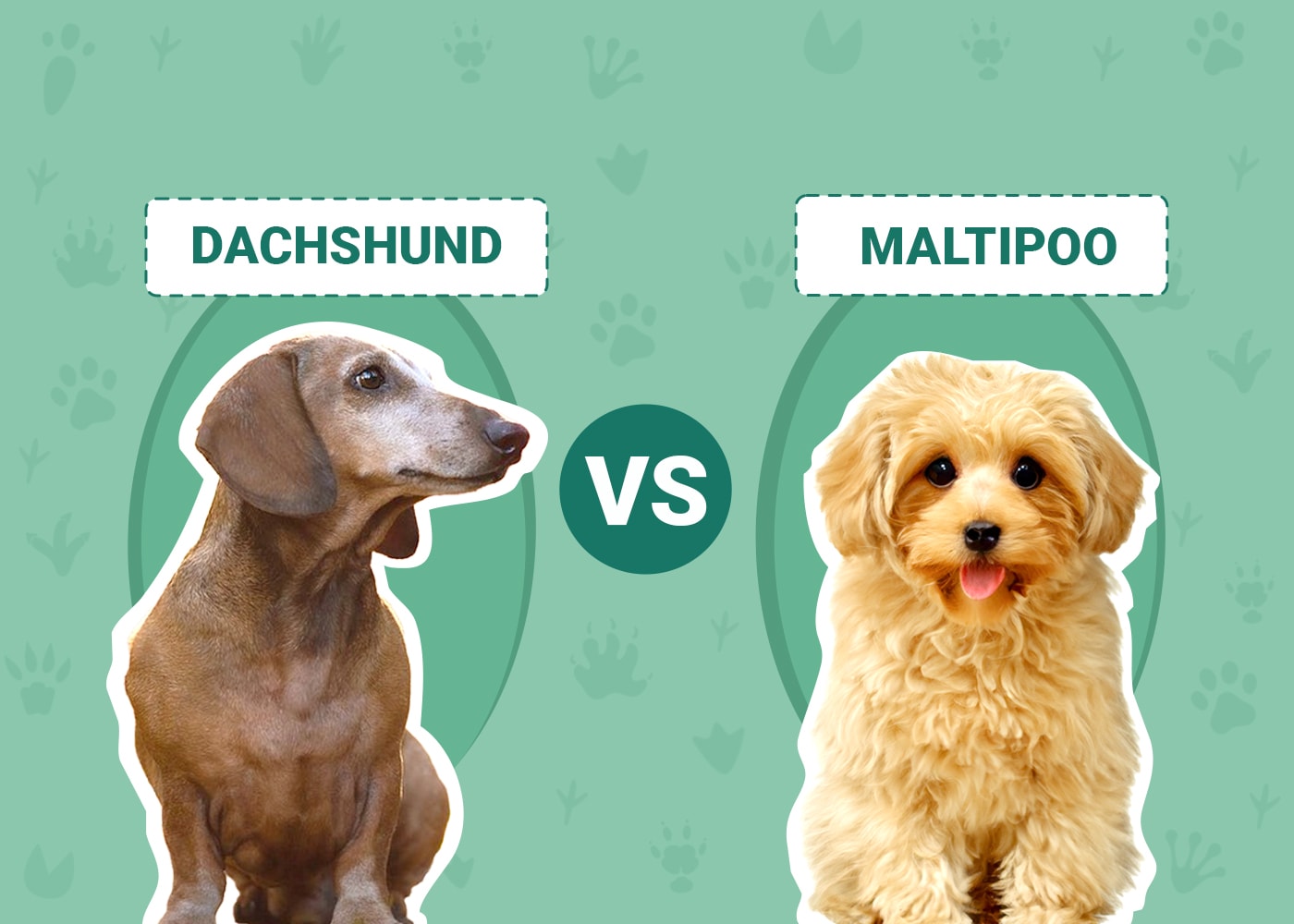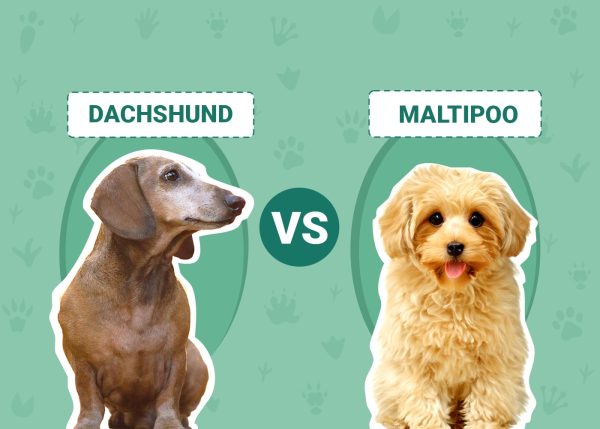Click to Skip Ahead
Dachshunds and Maltipoos are two popular small dog breeds that many people consider when looking for a new furry friend. With two great options, how will you ever choose? In this article, we’ll compare Dachshunds and Maltipoos in several key areas to help you decide which breed is the best fit for your lifestyle and personality.

Visual Differences
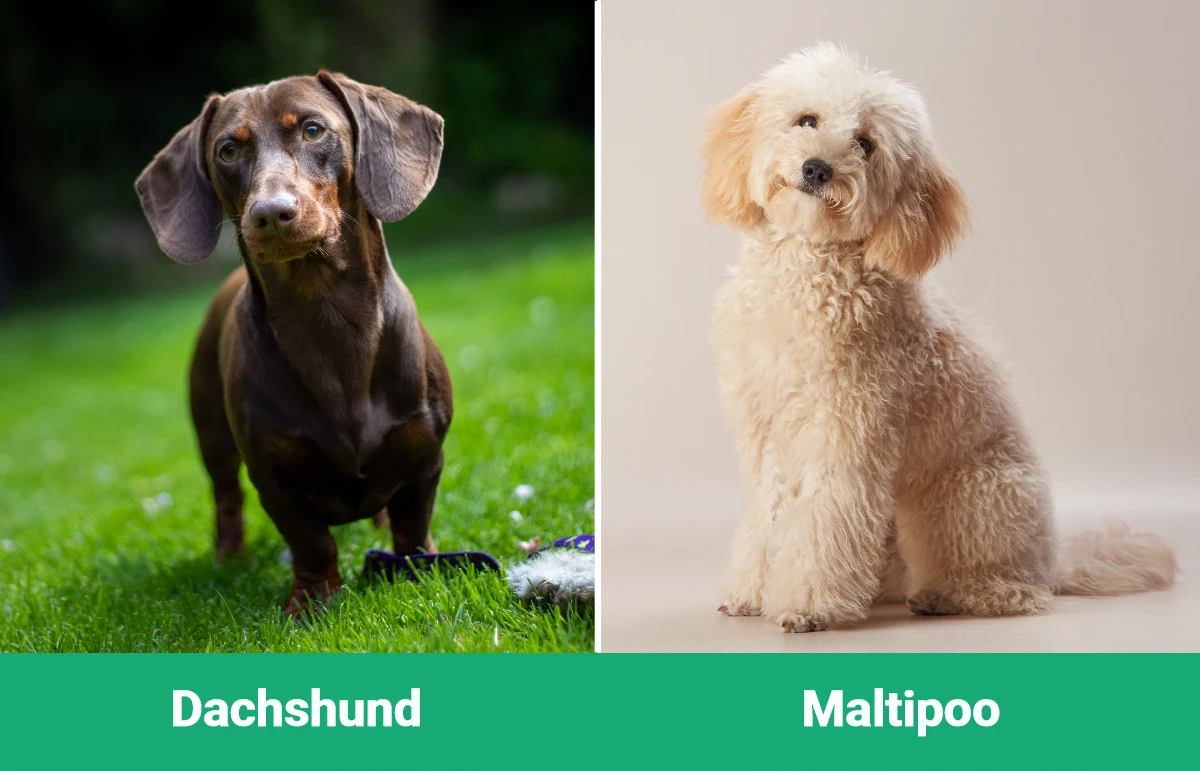
At a Glance
- Average height (adult): 9-12 inches
- Average weight (adult): 10-26 pounds
- Lifespan: 12-16 years
- Grooming needs: Weekly brushing; Bathe as needed
- Exercise: 20-30 minutes per day
- Family-friendly: Yes
- Other pet friendly: Yes, with supervision
- Trainability: Can be difficult to train
- Average height (adult): 8-14 inches
- Average weight (adult): 4-6 pounds
- Lifespan: 12-15 years
- Grooming needs: Daily brushing; Bathe as needed
- Exercise: 20-30 minutes per day
- Family-friendly: Yes
- Other pet friendly: Yes
- Trainability: Easy to train
Dachshund Overview

Dachshunds were originally bred in Germany in the early 1800s to hunt badgers. Their long bodies and short legs made them perfect for burrowing into small spaces after their prey. These dogs have become popular family pets all over the world and come in three different coat types: smooth, wirehaired, and longhaired.
Common coat colors include black, tan, and red. They have floppy ears, big brown eyes, and a long tail. Dachshunds come in two size varieties: standard and miniature. Standard Dachshunds weigh between 16 and 32 pounds, while miniature dachshunds weigh 11 pounds or less.
Personality / Characteristics
Dachshunds are intelligent and loyal dogs that are eager to please their owners. They have a high prey drive, which means they may not be the best fit for households with small pets such as hamsters or rabbits. Dachshunds require at least 1 hour of exercise per day and do best in homes with yards. They are also known to bark excessively.
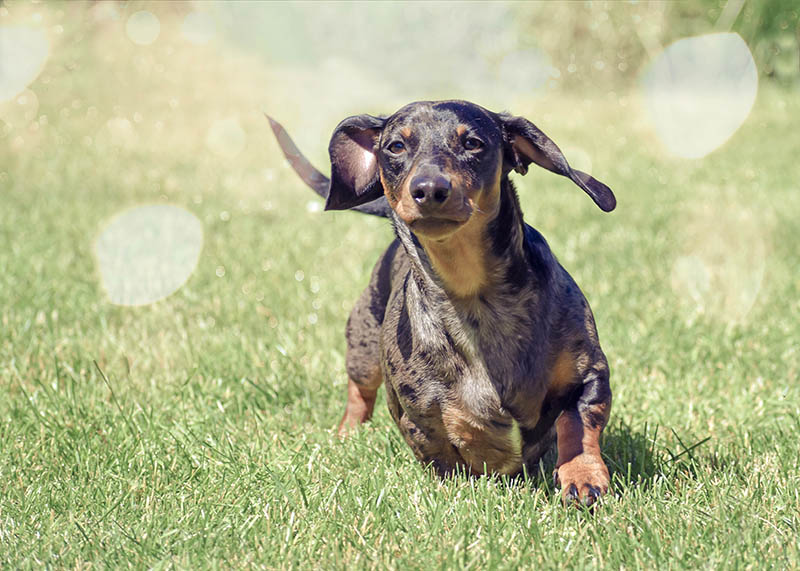
Training
Dachshunds are intelligent dogs, but they can be stubborn when it comes to training. To make training easier, they respond well to positive reinforcement techniques such as treats and praise. However, their high prey drive means they may need extra training to avoid chasing smaller animals.
Health & Care
Dachshunds are generally healthy dogs, but like all breeds, they are prone to certain health conditions. These include intervertebral disc disease, hip dysplasia, and epilepsy. Dachshunds require at least moderate grooming, including regular brushing and ear cleaning.

Breeding & Price
Dachshunds are not difficult to breed, but their litters are typically small, averaging 4–6 puppies. Prices for Dachshunds vary depending on factors such as coat type, color, and lineage, but they typically range from $500 to $1,500.
Suitable for:
Dachshunds are generally good with children, but their high prey drive means they may not be the best fit for households with small pets. Dachshunds may be a bit too energetic for seniors to handle. They also need a lot of space to run around and may not be suited for apartment living.

Maltipoo Overview
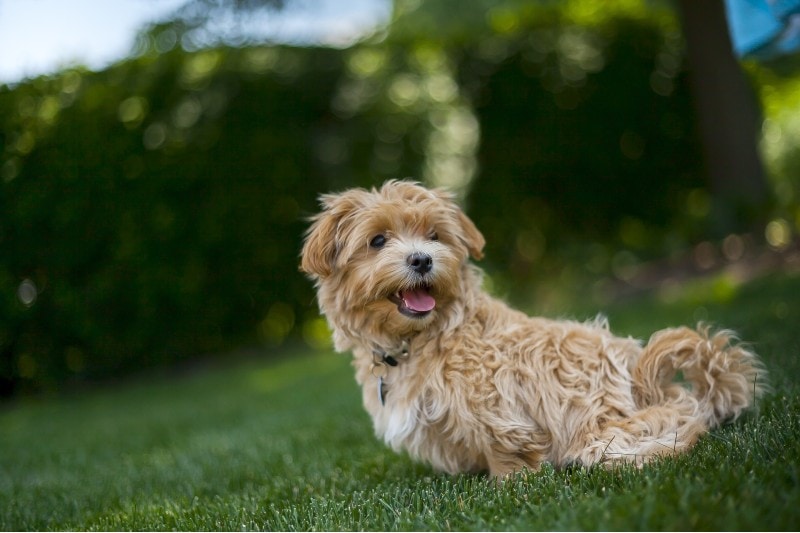
Maltipoos are a cross between a Maltese and a Toy or Miniature Poodle. They are small dogs that typically weigh between 4 and 6 pounds. Maltipoos come in a variety of colors, including white, black, brown, cream, and apricot.
Maltipoos were first bred in the United States in the 1990s. They were created as a hypoallergenic alternative to other popular dogs, such as Poodles and Maltese. The idea was to create a dog that would inherit the best characteristics of both breeds, including the Poodle’s non-shedding coat and the Maltese’s gentle personality. They became recognized as a designer breed in the 2000s and have since become popular pets all over the world.
Maltipoos have a compact build. They have round heads, dark eyes, and black noses. Their ears are floppy, and their tails are long and thin. Maltipoos have a single coat of fur that is either curly or wavy.
Personality / Characteristics
Maltipoos are intelligent but stubborn dogs that require firm training. They are also known to be barkers. Maltipoos need at least 30 minutes of exercise per day and do best in homes with yards.
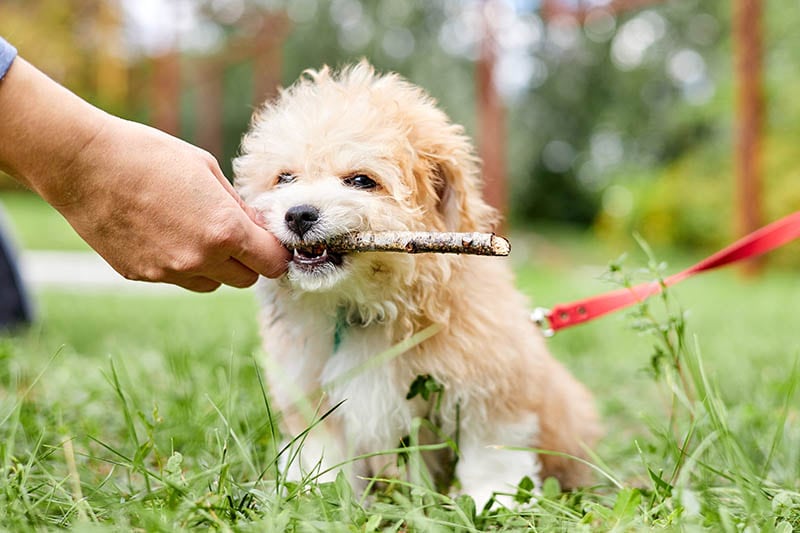
Training
Maltipoos are intelligent dogs that respond well to positive reinforcement training techniques such as treats and praise. However, their stubborn streak means they may need extra patience and consistency when learning new commands.
Health & Care
Maltipoos are generally healthy dogs, but like all breeds, they are susceptible to certain health conditions. These include patellar luxation, hypoglycemia, and eye problems. Maltipoos require moderate grooming, including regular brushing and ear cleaning.

Breeding & Price
Maltipoos are not difficult to breed, but their litters are typically small, averaging 4–6 puppies. Prices for Maltipoos vary depending on factors such as coat color and patterns, but they typically start at $1,000.
Suitable for:
Maltipoos are better suited for apartment living because they require less exercise than Dachshunds. They are also generally good with children. Maltipoos are generally good with other pets, but their barking instincts may require extra training. They also require less exercise, so they are better suited for busy lifestyles.
Which Breed Is Right for You?
So, which one is right for you? It really depends on your lifestyle and what you’re looking for in a pet. If you’re active and looking for a dog that will need plenty of exercise, the Maltipoo might be a better fit. If you’re looking for a loyal companion that is easy to train, the Dachshund might be the breed for you. Ultimately, the decision is up to you!
Featured Image Credit: Top – Masarik, Shutterstock | Bottom – dezy, Shutterstock

